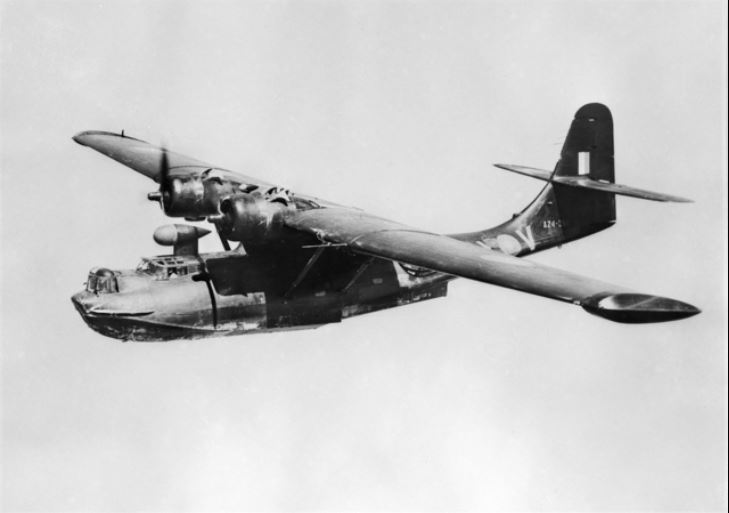No. 43 Squadron RAAF
From Our Contribution
 Catalina A24-362 from No 43 Squadron | |
Brief History
No. 43 Squadron RAAF was formed at Bowen, North Queensland on 1 May 1943. By mid-August 1943 the Squadron had moved to an operational base at Kurumba. The first of the unit's Consolidated PBY Catalina aircraft (A24-56 and A24-6-l) had arrived in Bowen on 7 August. This enabled the unit ti fly its first operation from Bowen on 17 August, when they undertook a search for a massing Catalina. The first strike undertaken by the unit took place on the night of 8 September, when the Catalinas struck at targets at Amboina.
Operations from Kurumba included similar attacks on Babo, Langgoor, Ambon, Sarong. Toeal, Kaimana, Jefman and Taberfane. On
one occasion an aircraft was intercepted by an enemy night fighter. On the night of 31 Jan 1944 it was caught in a searchlight beam over Panapai and an enemy fighter, thought to have been a 'Dinah', made a pass from above and astern, firing tracer and explosive rounds, before passing beneath the diving Catalina which was damaged by small calibre hits on the starboard elevator.
43 Squadron maintained a detachment at Bowen. which undertook anti-submarine and convoy patrols, and co-operated with aircraft from 11 and 20
Squadrons in an attack on Kavieng. It was on the night of 29 Dec 1944,a Catalina making its third run over the target area, suffered a direct hit on the starboard motor. The propeller was feathered, and the guns, ammunition and special equipment jettisoned to lighten the aircraft. Despite these efforts, it was not possible to cross New Britain on one engine, so the pilot headed north to wait for dawn near the Witu Island group, before finally landing at Finschhafen, where the aircraft was repaired.
The Squadron transferred to Darwin on 9 Apr 1944, where it commenced operations from facilities at Doctor's Gully. Soon after arrival they began the first of many special missions laying mines in enemy waters and harbours. Aircraft staged through Aircraft staged through 'Shecat' and as far afield as Morotai to complete their missions. The Catalinas flew up to 25 hours on individual mining tasks, and blockaded areas such as Hainan, Surabaya and Laoet Straits, and harbours at Hong Kong, Amoy, Seroea and the Pascadores Islands. The last mining mission undertaken by 43 Squadron personnel was on the night of 29 Jul 1945, when mines were dropped in Bangka Strait.
Mining was not the only task undertaken by Catalina aircraft of 43 Squadron. These aircraft flew air-sea rescue sorties in support of long range bomber strikes on targets in the Dutch East Indies (now Indonesia), as well as harassing Japanese facilities at Mandac, Lomboeng,
Boeloedoang, Kendari and Ambesia. The Squadron also flew anti-shipping strikes.
Even though the War ended in August. 43 Squadron flew patrols over the Dutch East Indies and the approaches to Darwin until being warned,
on 10 November 1945, that it would be moving to Rathmines, New South Wales, at the end of the month. The move of the Squadron from Doctor's Gully had been completed by 3 Dec 1945. Squadron operations ceased by 1 Feb 1946 and the unit was disbanded on 11 Mar 1946.
Ground Crew
- Nicholas Keating 5 Oct 1944 - 24 Jun 1945
Notes
Content has come from Units of the Royal Australian Air Force - A Concise History - Volume 4 Maritime & Transport Units pages 80 - 82 - Australian Government Publishing Service - 1995